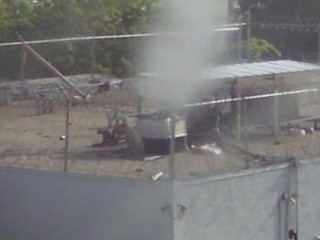I’ve been reading more and more about people breaking into buildings through the roof. Which I’m sure a lot of business owners are more concerned about the damage done to the roof, than the actual items they stole or at least attempted to steal.
I just read about police arresting two teenagers after the roof of a mall was cut in an apparent failed attempt to steal some sneakers. Investigators say two teens were captured at the scene. A third youth escaped while trying to flee via the roof. More than a dozen pairs of shoes were abandoned atop the roof.
The teens are facing burglary and evading arrest charges. The mall was forced to close down early that day, and now will have to fix the roof. These little burglaries are costing companies a lot of headaches and money.
Some Companies have bulked up Security
Some companies have taking it to the extreme to prevent these types of roof break-ins. A Miami business has chosen to house a dog on the roof of their building for property security.
The company claimed that they have been burglarized three times and the presence of dogs seems to be the only way to keep thieves at bay. Animal activist are burning up about the dog living in these types of conditions. Which is very understanding, anyone that has been on top of a roof during the hot summer months would understand. I’m not writing this to decide who is right or wrong, personally I just think it is a very interesting story.
